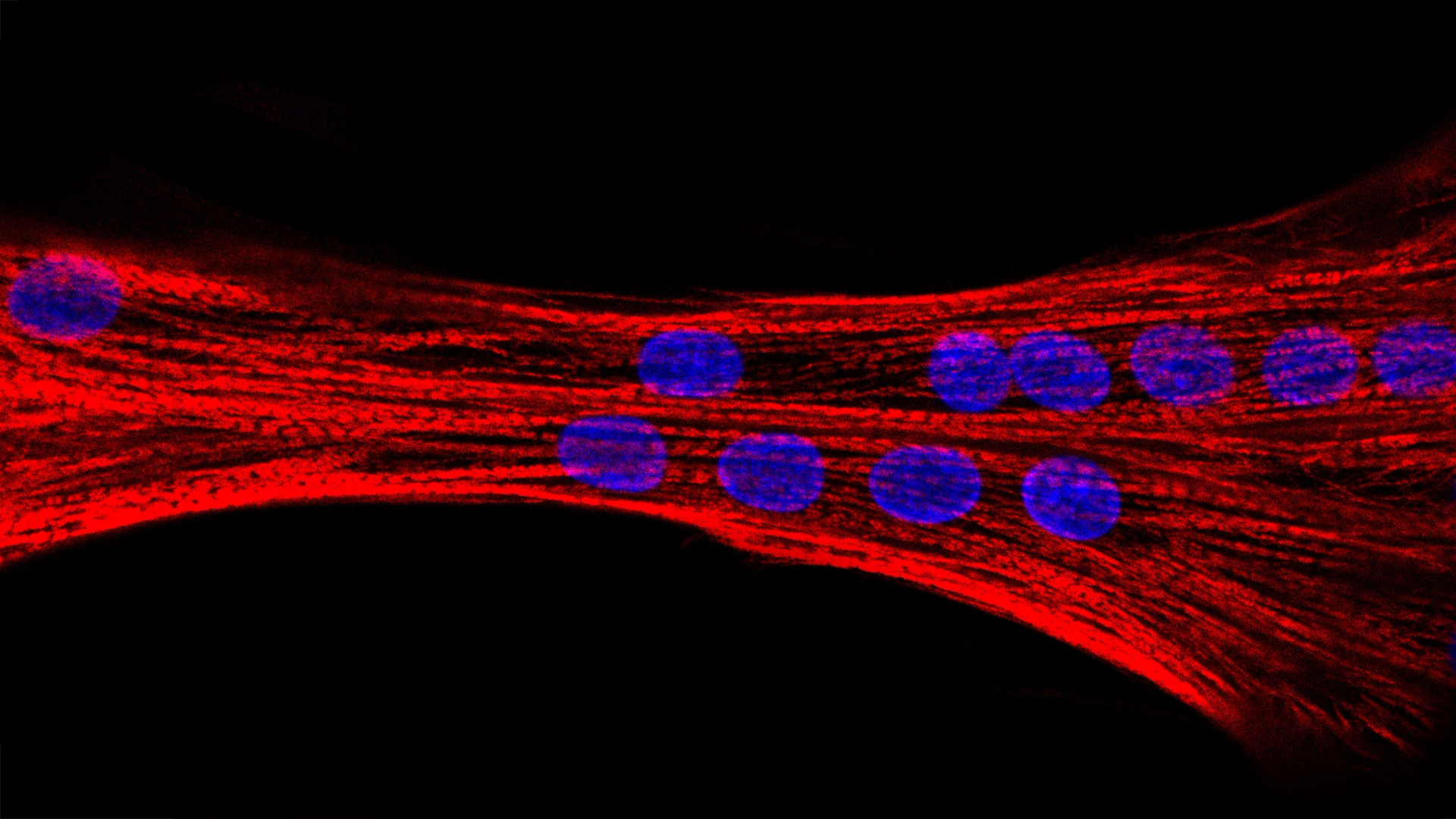More than 30 million people suffer from severe muscle disorders in the EU and US alone. The current standard of care is palliative treatment in the form of artificial ventilation, physiotherapy, or surgery. Severe muscle diseases include local muscle defects, hereditary muscular dystrophies, and secondary muscle wasting in the context of other acquired diseases.
Local muscle defects are caused by trauma, surgery or prenatal malformations and can have a significant impact on patients’ lives. A defect in the bladder sphincter muscle can lead to life-long urinary incontinence; defects in the diaphragm to the inability to breathe without artificial ventilation.
Muscular dystrophies comprise more than 50 different diseases. They are caused by mutations in specific genes that are the blueprint for proteins relevant to muscle function. Mutations are either inherited or may occur spontaneously. The disease courses are clinically heterogeneous, leading to progressive weakening and degradation of skeletal muscle over time. The diseases differ in terms of which muscles are primarily affected, and when symptoms appear.
Secondary muscle wasting occurs in the context of other diseases and worsens the prognosis of the primary disease. Cachexia (secondary muscle wasting) is caused by diseases such as cancer, congestive heart failure, chronic obstructive pulmonary disease, chronic kidney disease, and infectious diseases. Sarcopenia is muscle atrophy that occurs with aging. It leads to reduced quality of life, falls, fractures, and disability.

